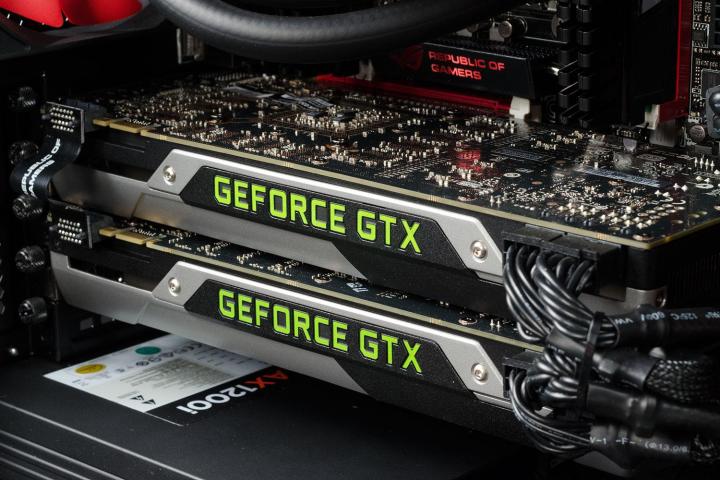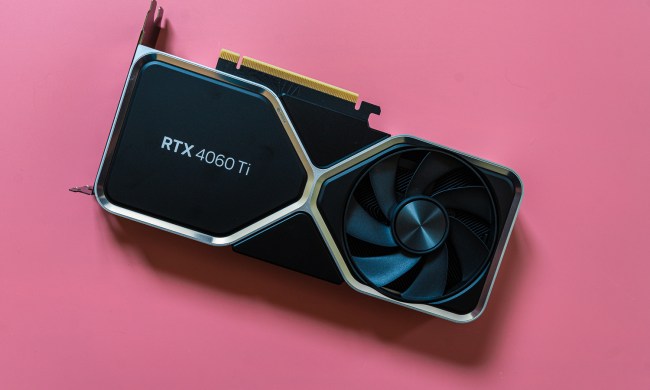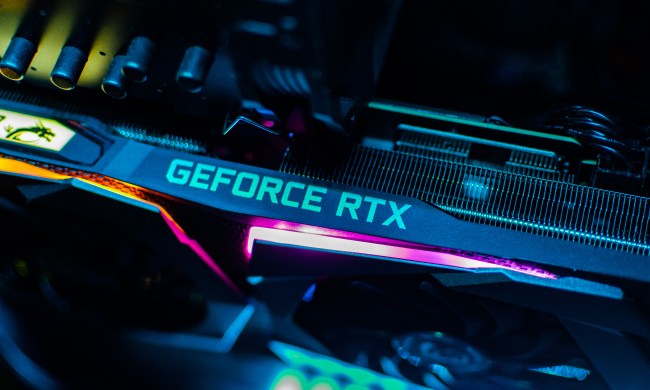
According to the 3DMark benchmark, the unannounced card was tested in a system with an Intel Core i7-4770K processor. The overall graphics score was 1,895 points, with the card pulling in 9.34 frames per second in the first graphics test and 7.09 frames per second in the second test. Combined with a physics score of 10,080 points and 32 frames per second, the resulting score produced 927 points and 4.31 frames per second.
As previously stated, these recent benchmark scores put the card in the same league as Nvidia’s older GeForce GTX 960. This newer Pascal-based card is expected to retail for $150 when it goes live later in October and reportedly scored 2,513 points in the Time Spy benchmark as well. Compared to AMD’s low-cost Radeon RX 400 Series aimed at the general consumer, Nvidia’s GTX 1050 Ti will fit right between the $100 RX 460 and the $180 RX 470 in price and performance.
The sample getting all the attention as of late reportedly features a dual-slot cooling system and a six-pin power connector. The reference base clock is supposedly 1,290MHz and the boost clock is 1,392MHz, but this model was cranked up to 1,354MHz and 1,468MHz, respectively, with the potential to hit a boost speed of 1,797MHz right out of the box likely with the extra power connector plugged in.
Here is what we have on the GTX 1050 numbers right now along with the GTX 1060 3GB model just for kicks:
| GTX 1050 | GTX 1050 Ti | GTX 1060 3GB | |
| Graphics core | GP107 | GP107 | GP106 |
| CUDA cores | 640 | 768 | 1,152 |
| Base clock | 1,354MHz | 1,290MHz | 1,518MHz |
| Boost clock | 1,455MHz | 1,392MHz | 1,733MHz |
| VRAM | 2GB GDDR5 | 4GB GDDR5 | 3GB GDDR5 |
| Memory interface | 128-bit | 128-bit | 192-bit |
| TDP | 75 watts | 75 watts | 120 watts |
| FP32 Compute | 1.8 TFLOPS | 2.1 TFLOPS | 4.0 TFLOPS |
| Output | 3x DisplayPort 1.4 1x HDMI 2.0b |
3x DisplayPort 1.4 1x HDMI 2.0b 1x DVI |
3X DisplayPort 1.4 1x HDMI 2.0b 1x DVI |
| Price | $120 | $150 | $200 |
Now check out AMD’s three Radeon RX 400 Series cards as a price/performance reference:
| RX 460 | RX 470 | RX 480 | |
| Graphics core | Polaris 11 | Polaris 10 | Polaris 10 |
| Cores | 896 | 2048 | 2,304 |
| Base Clock | 1,090MHz | 926MHz | 1,120MHz |
| Boost clock | 1,200MHz | 1,206MHz | 1,266MHz |
| VRAM | 2GB / 4GB GDDR5 | 4GB GDDR5 | 4GB / 8GB GDDR5 |
| Memory interface | 128-bit | 256-bit | 256-bit |
| TDP | 75 watts | 120 watts | 150 watts |
| F32 compute | 2.1 TFLOPS | 4.9 TFLOPS | 5.8 TFLOPS |
| Output | 1x DVD-D 1x HDMI 2.0b 1x DisplayPort 1.3 |
3x DisplayPort 1.3 1x HDMI 2.0b |
3x DisplayPort 1.3 1x HDMI 2.0b |
| Starting Price | $110, $140 | $180 | $200, $240 |
As you can see, AMD and Nvidia are fighting over the huge pool of mainstream consumers wanting lots of bang for the buck. All of these cards are under a very low price point, but if the 1050 Ti and 1050 vanilla cards fall within or close to the GTX 960 performance window, then customers wanting to sink their hard-earned cash into the Oculus Rift might want to option the GTX 1060 cards and above just in case. The recommended specs for the Rift call for the GTX 970 while the minimum requires the GTX 960.



